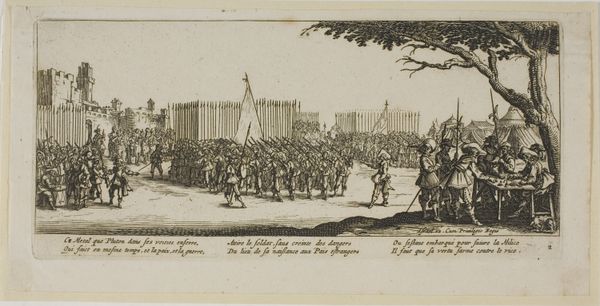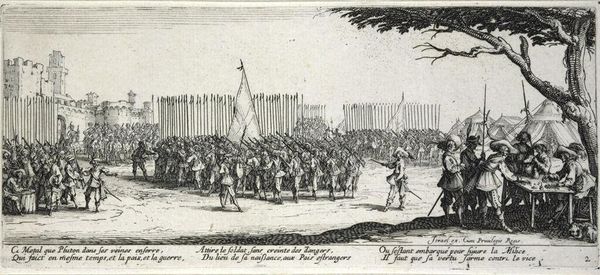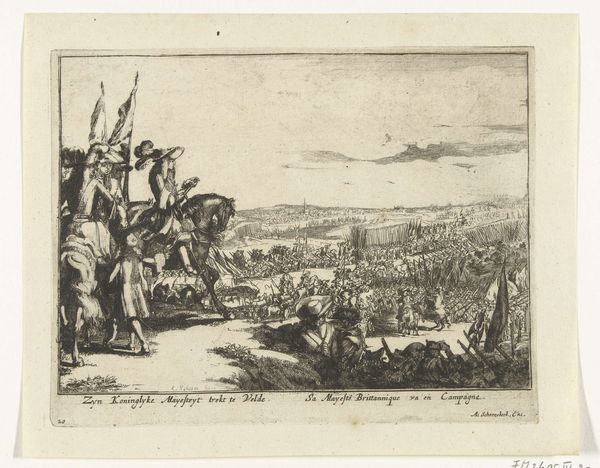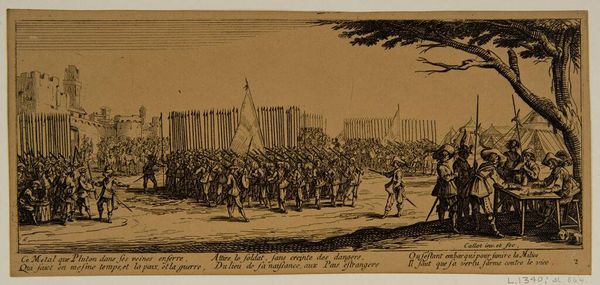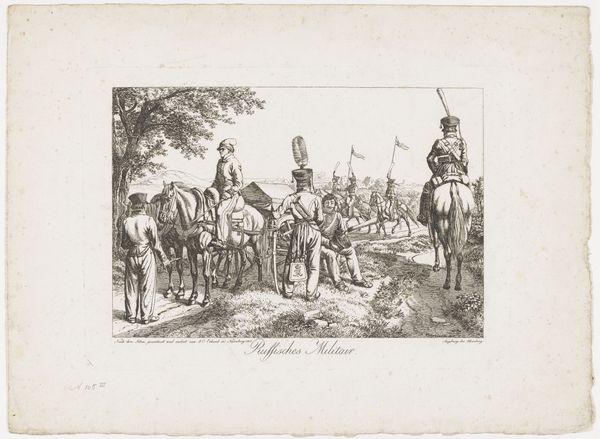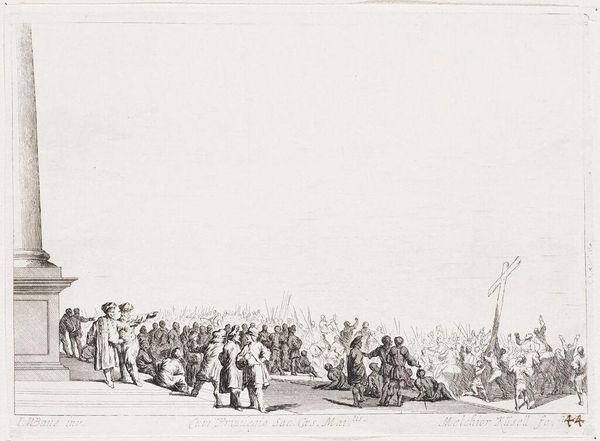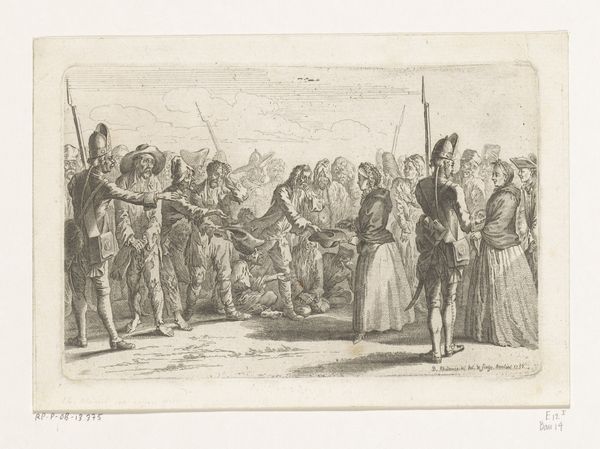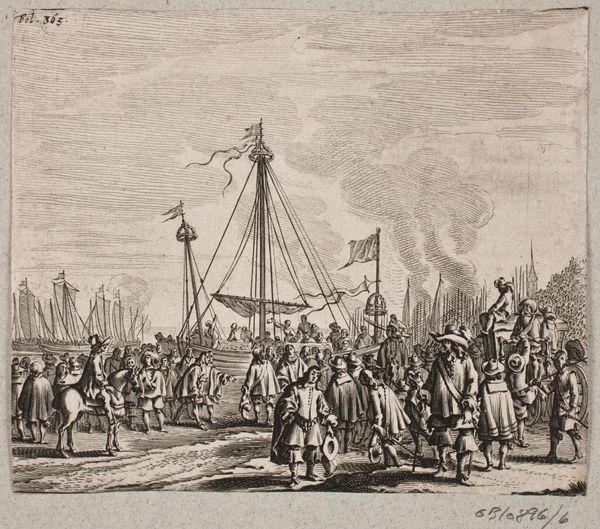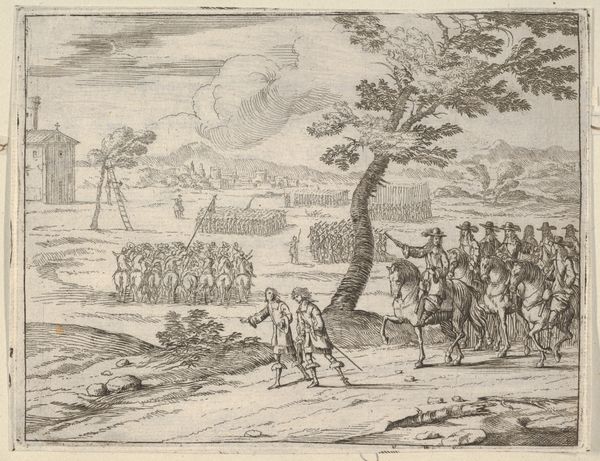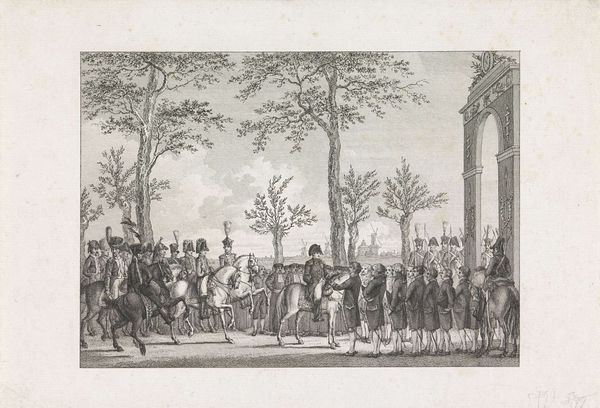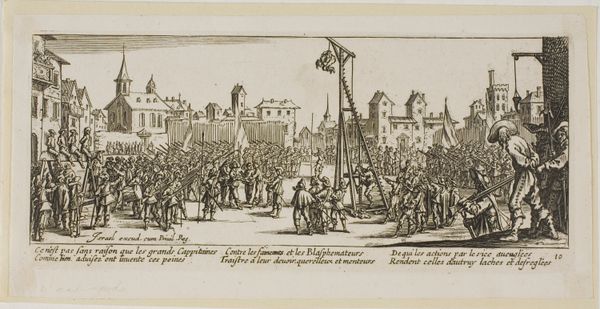
print, engraving
#
baroque
# print
#
figuration
#
line
#
cityscape
#
genre-painting
#
history-painting
#
engraving
#
realism
Dimensions: 83 mm (height) x 188 mm (width) (plademaal)
Curator: Looking at this scene, I’m struck by the incredible detail achieved with what appears to be very simple line work. Editor: Absolutely! It's disarming. This bustling cityscape gives me the impression of organized chaos, almost a pre-battle fever dream. It feels immediate, raw. Curator: Precisely. We’re examining Jacques Callot's "Tropper rekruteres," created in 1633. Callot was a master of engraving, and his use of the medium is truly remarkable here. Editor: It's fascinating to consider the societal context in which Callot was producing prints like these. He isn't making grand history paintings, but images of soldiers enlisting; very accessible subject matter that speak of war and militarization Curator: Exactly. This print belongs to a series documenting the Thirty Years' War. What’s so fascinating is how he highlights the material processes intertwined with conflict. He doesn't just depict the heroic moments, but the everyday realities. Look at the sheer number of figures, meticulously rendered with distinct gestures and expressions. The line becomes labor. Editor: I am drawn to the way institutions influence perception, shaping both creation and consumption. Callot's decision to produce prints for distribution reveals a specific intention of communicating political messages directly to a public. What narrative does that suggest to you? Curator: It brings the brutalities of warfare, recruitment tactics, the human cost, directly to the eyes of the contemporary audience. Beyond the narrative elements and more broadly in its art historical context: Callot pushed the boundaries of printmaking in an era defined by social, political, and religious upheaval, and the prints, cheap and accessible as they are, were consumed voraciously in the process. Editor: He really documented an aspect of society through production, class and dissemination in print culture and through artmaking that spoke loudly in political discourse. It’s interesting how closely materials and the process of print are aligned with a certain social narrative in Callot's era, very different from oil painting or the sculpture’s role in wealthy households or sacred spaces. Curator: Indeed, examining Callot’s engraving offers a tangible connection to an era defined by political strife and its deep-seated social unrest through these figures and how labor and the economy, the prints themselves were produced, and finally dispersed as objects through various trade routes. Editor: Thinking about how public awareness of social structures affect even just this image alone definitely affects my understanding of history. Thank you for sharing that viewpoint.
Comments
No comments
Be the first to comment and join the conversation on the ultimate creative platform.
